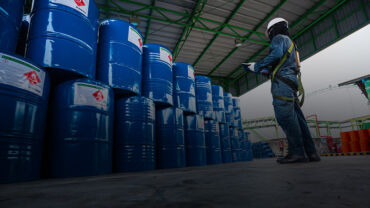The global trade landscape is always in a state of flux. Trade regulations, geopolitics, free trade agreements, sourcing trends, and even the latest WCO 2022 tariff schedule update all add to the complexity of trade compliance. That’s why it is critical for importers and exporters to stay up-to-date with new and emerging trade issues, so they can help their companies remain compliant and avoid potential fines, penalties, and reputational harm.
Keep reading for the top 5 trends in global trade that US importers and exporters should be aware of.
Global trade trend #1: The Trade Act of 2021 may expand duty-free trade under the Generalized System of Preferences
In June, the US Senate approved the US Innovation and Competition Act, which includes the Trade Act of 2021, a trade amendment that renews and expands two significant trade programs, the Generalized System of Preferences (GSP) and the Miscellaneous Tariff Bill (MTB).
The GSP eliminates tariffs on thousands of products from more than 120 developing countries. It also gives US companies tax-free access to products and materials from a more diverse network of suppliers, which lowers manufacturing costs. The program expired on December 31, 2020, but if the House of Representatives passes the US Innovation and Competition Act, the program will be extended for another six years, allowing many countries in the developing world to conduct duty-free trade with the US.
Aside from its notable tax benefits, the renewed GSP includes stricter eligibility rules for participating countries – rules that advance “American values” in the areas of human rights, women’s economic empowerment, the environment, digital trade, and the rule of law. Among its many provisions, the GSP gives sharper teeth to regulations involving exploitative labor practices, particularly if it involves women and children.
These developments have important implications for supply chain transparency. For multinationals, the GSP underscores the fact that a comprehensive, holistic understanding of the supply chain may be the key to avoiding the sort of fines, penalties, and reputational damage that comes with being linked in any way to forced labor practices. Denied party screening software and supply chain compliance software are two critical components of risk mitigation that can help you avoid doing business with bad actors.
Global trade trend #2: The new CBP Global Business Indicator (GBI) initiative will require more insight into import/export data
Another push for transparency to watch for in the coming months is the US Custom and Border Protection’s Global Business Indicator (GBI) initiative, which proposes replacing current manufacturer/shipper ID codes (MID) with a new ID system that provides the CBP with considerably more import/export information. The pilot program or Evaluative Proof of Concept (EPoC) is expected to go live in spring 2022. There won’t be mandatory reporting of GBI, but the pilot will be live and available for those who want to participate.
According to the CBP, the current MID system needs to be updated because the increased volume of import/export activity – 28.5 million cargo containers at 328 US ports of entry in 2020 – introduces an unacceptable level of risk. The CBP wants more information on cargo entering and exiting the US, partly to help identify high-risk cargo and partly to make the whole system more comprehensive and efficient.
So, in addition to identifying a product’s legal ownership, country of origin, and role in the supply chain, the new GBI will also include eight more data categories and go a long way toward digitizing every aspect of supply chain management and regulatory oversight.
Global trade trend #3: CBP’s 21st-Century Customs Framework ushers in a new era of trade
Meanwhile, the CBP is also busy “reimagining” trade through its 21st-Century Customs Framework (21CCF) initiative, the most ambitious effort to modernize the global trade system since the US Customs Modernization Act of 1993, before the internet even existed.
Considering that so much commerce is now conducted over the internet, and so many useful new technologies (e.g., blockchain, artificial intelligence, robotics, API) have been developed in the past 25 years, the CBP feels it is time to quite literally bring global trade’s entire technological framework into the 21st century.
In the CBP’s words, “We envision a global trade environment that enables an agile, efficient, data-driven, interconnected, and secure customs enterprise for the 21st-century and beyond.”
________________________________________________________________________________
Read our article to learn how emerging technologies and automation are redefining global trade management.
________________________________________________________________________________
At the moment, the 21CCF Task Force is collecting feedback and ideas from more than 90 different stakeholders, including importers, exporters, brokers, air and freight carriers, and representatives from businesses of all sizes. Ultimately, the CBP envisions creating a data-driven, technologically integrated, “transformative” trade framework that accomplishes several policy and security objectives at once.
Namely, the CBP envisions a framework that:
- Moves legitimate goods swiftly and securely across borders
- Allows US companies to compete on a level playing field
- Ensures that all imports are safe
- Ensures that ethical production methods are used throughout the supply chain
- Employs technologically intelligent enforcement mechanism
- Ensures seamless data-sharing and access
- Protects and enhances the entire customs infrastructure
- Positions the US as the world leader in innovative trade practices
In short, the 21CCF is going to be a historic and much-needed modernization of international trade practices. However, that also means companies will be responsible for updating their own operational and technological infrastructures in order to meet the demands of what is soon to become a new era in international trade.
Global trade trend #4: US increases enforcement on forced labor
Embedded in many of the initiatives discussed thus far is increased attention to – and enforcement of – various human rights violations, especially forced labor in such countries as China and North Korea.
On July 13, 2021, the US Depts. of state, treasury, labor, commerce, and homeland security issued a 36-page joint statement that cited details of suspected human-rights abuses in China’s Xinjiang province, and included an extensive list of commodities whose supply chains may be compromised. The statement warned that “businesses and individuals that do not exit supply chains, ventures, and/or investments connected to Xinjiang could run a high risk of violating US law.”
In addition, on July 14, 2021, the US Senate unanimously passed the “Uyghur Forced Labor Prevention Act,” which outright bans imports from the Xinjiang Uyghur Autonomous Regions (XUAR) if the products are manufactured using forced labor.
What’s new in the XUAR bill is that importers are being held responsible for proving that forced labor was not used in manufacturing the products, parts, or materials they are importing. In practice, this means that companies and importers will need to be hyper-vigilant about investigating every link in their supply chains, including (but not limited to) sending investigators directly to the fields and factories where their products are being made.
Such investigations may not be easy, however, as China has retaliated by making it illegal for suppliers in Xinjiang province to provide information on forced labor to inquiring companies. Therefore, companies that continue to source materials and products from China’s Xinjiang province may not be able to ensure that their supply chains are untainted by forced labor, an uncertainty that now represents a very real risk of violating US law.
Global trade trend #5: Uncertainty about USMCA compliance and enforcement continues
Though the US-Mexico-Canada (USMCA) trade agreement technically went into effect on July 1, 2020, much of the corporate world is still trying to understand what the law’s new regulations really mean, and precisely what actions need to be undertaken in order to comply.
________________________________________________________________________________
Read our tip sheet for more information on USMCA uniform regulations.
________________________________________________________________________________
For example, the USMCA has no set certificate of origin format, so many companies are looking for more information and guidance on what format they should use. An inconsistent format makes it more difficult to automate certificate of origin processes, so format standardization is something most companies want.
The USMCA arguably affects the automotive industry more than any other sector, and here too there is still uncertainty over, among other things, how to apply new Regional Value Content (RVC) rules, which bump up the RVC requirement for cars and light trucks from 62.5% under NAFTA to 75% under the USMCA.
RVC calculations are more complicated under the USCMA. For example, car parts are separated into different categories (e.g., core, super-core, principal, complementary), with specific guidelines associated with each part and its associated materials and components.
The USMCA also has a Labor Value Content (LVC) provision that is unique and somewhat complicated, so industry execs are still awaiting guidance about the calculations necessary for compliance. In any case, further updates and guidance are necessary before enforcement of USMCA violations begins in earnest. Companies can also ease the burden of FTA compliance by automating time-consuming activities like calculations and supplier solicitations with dedicated FTA management software.
How US importers and exporters can stay informed and ensure compliance
To stay current with the latest on import/export regulations and sanctions, sign up for regular free updates from CBP and the US Census Bureau. You can also follow our blog and watch our new webinar series on strategies to mitigate supply chain risk and disruption.
For a broader, more comprehensive solution, consider automating your import/export processes with global trade management software that comes integrated with up-to-date trade content.







